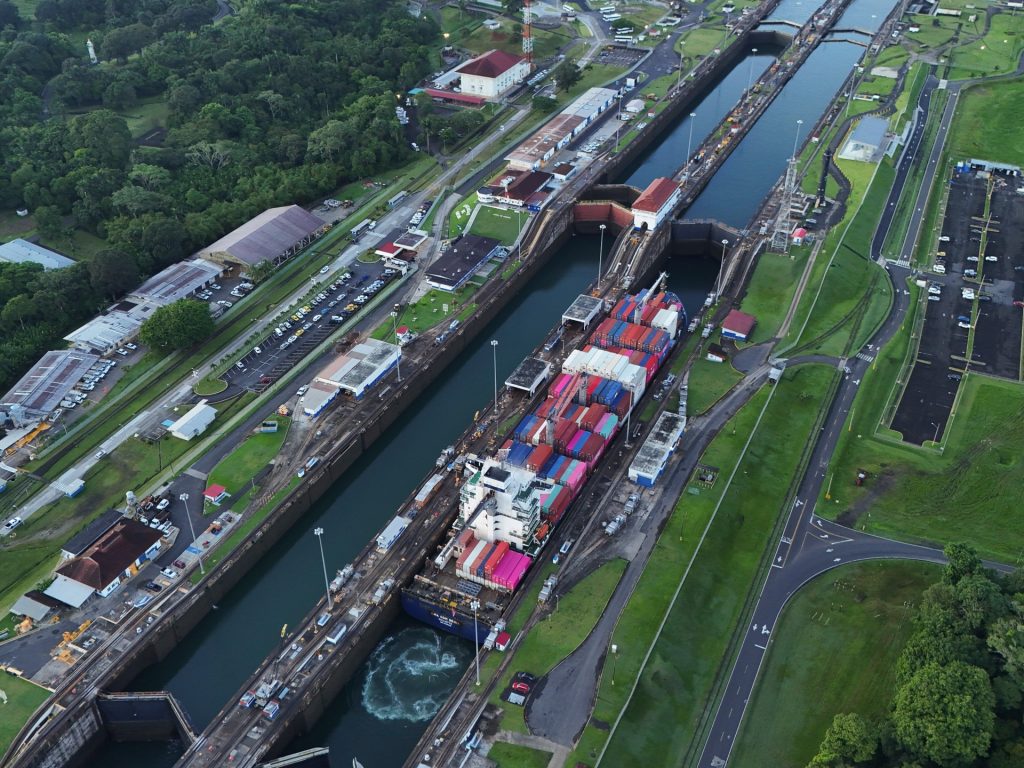As he prepares to take back the presidency of the United States this month, Donald Trump has spontaneously started threatening to take back the Panama Canal.
According to the incoming president’s latest rants on social media, Panama is “destroying” the US with “ridiculous” tariffs to use the transoceanic waterway and main channel for global trade. As Trump sees it, the Central American country’s behavior is particularly objectionable “given the extraordinary generosity that has been bestowed upon Panama by the US.”
Trump has also baselessly claimed that Chinese troops are currently operating the canal. In reality, of course, the Panama Canal was previously operated by none other than the United States, which built the canal in the early 20th century and only handed control over to Panama in 1999.
As for the “extraordinary generosity” allegedly given to the country by the friendly local superpower, we can only recall the so-called “Operation Just Cause” of the US army, launched in December 1989, thanks to which the El Chorrillo slum in the Panamanian capital . from Panama City earned the name “Little Hiroshima”.
Up to several thousand civilians were killed in the manic display of firepower, a practice run for the upcoming US war against Iraq. For his part, Panamanian leader and former US friend Manuel Noriega surrendered to US forces on January 3, 1990, after his stay at the Vatican embassy in Panama City was cut short by a torture playlist. music blaring from American tanks parked outside. Selected tunes included Lee Greenwood’s “God Bless the USA” and Bon Jovi’s “Wanted Dead or Alive.”
Noriega was carted off to Miami to face drug-trafficking and other charges – never mind his long history on the CIA payroll despite full US knowledge of narco-activity mentioned. His departure meanwhile paved the way for much greater involvement in the international drug trade by Panama’s ruling class.
Just call it “extraordinary generosity.”
As for earlier periods of generosity, the US from 1903 to 1979 presided over a de facto colony called the Panama Canal Zone, which included a significant portion of Panamanian territory and adhered to a system of racial segregation that continued even after such things. were officially abolished in the US. The Canal Zone was also host to all kinds of US military bases and other installations such as the infamous US Army School of the Americas, attended by many Latin American dictators and death squad leaders, as well as Noriega himself.
The United States completed construction of the Panama Canal in 1914—an enterprise that claimed thousands of lives and relied heavily on black labor and gang slavery. An exercise in world domination rather than “generosity,” construction of the canal began during the administration of U.S. President Theodore Roosevelt, who was obsessed with the idea that the waterway was “the vital—indispensable—path to a global destiny for the United States of America.” America,” as historian David McCullough points out in his tome The Road Between the Seas: The Making of the Panama Canal, 1870-1914.
When Roosevelt assumed the presidency in 1901, Panama still belonged to Colombia, but negotiations between the Colombian government and the US over the proposed canal proved less than smooth. And voila: the new nation of Panama was thus born in 1903, with Roosevelt as its patron and more than thrilled to cede part of its territory as well as national sovereignty to the US.
As John Weeks and Phil Gunson put it in their book Panama: Made in the USA, the country was “carved out of the heart of Latin America to serve the objectives of a foreign power.” And to this day, Panama bears the scars of the carving. A prominent Panama City street still bears Roosevelt’s name, although Fourth of July Avenue has been renamed Martyrs Street in honor of the victims of the flag riots of January 1964. On that particular occasion, US forces killed about 21 people after Panamanian students tried to raise their flag next to the American one at a Canal Zone high school.
As it happens, Trump has his own connection to the Panama City landscape in the form of a luxury beachfront condo formerly known as the Trump Ocean Club International Hotel and Tower and still referred to locally as “Trump” despite dropping his last name from the sign. . In 2017, NBC reported that the Trump Organization had licensed its name to the 70-story building, which was “riddled with ties to drug money and international organized crime.”
That said, it’s not like Panama is an issue that’s ever kept Trump up at night. Rather, the sudden threats to reclaim the Panama Canal are simply part of the “America First” president-elect’s approach to whipping his fan base into a delusion of pompous entitlement — all with the help of hallucinatory insults to ” generosity” of the USA.
As if America wasn’t already “first” in terms of wreaking havoc around the world. But hey, when you’re the world’s number one imperial superpower, you gotta have your cake and be a victim too.
McCullough writes of how, in the midst of failed canal negotiations in Washington in 1902, Colombian diplomat Dr José Vicente Concha made the following observation about his gringo counterparts: “The desire to appear, as a nation, more respectful of the rights of others compels these gentlemen to play a little with their prey before eating it, though when all is said and done they will do so in one way or another.”
And while Trump can hardly be bothered with feigned respect, the US has certainly not lost its appetite for playing its prey.
The views expressed in this article are the author’s own and do not necessarily reflect the editorial position of Al Jazeera.


